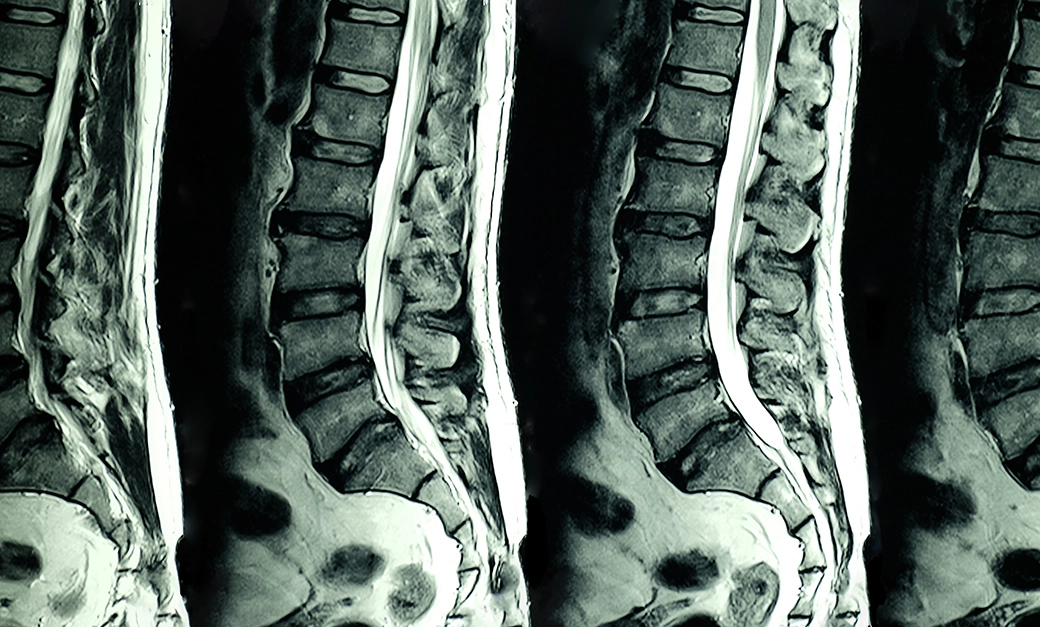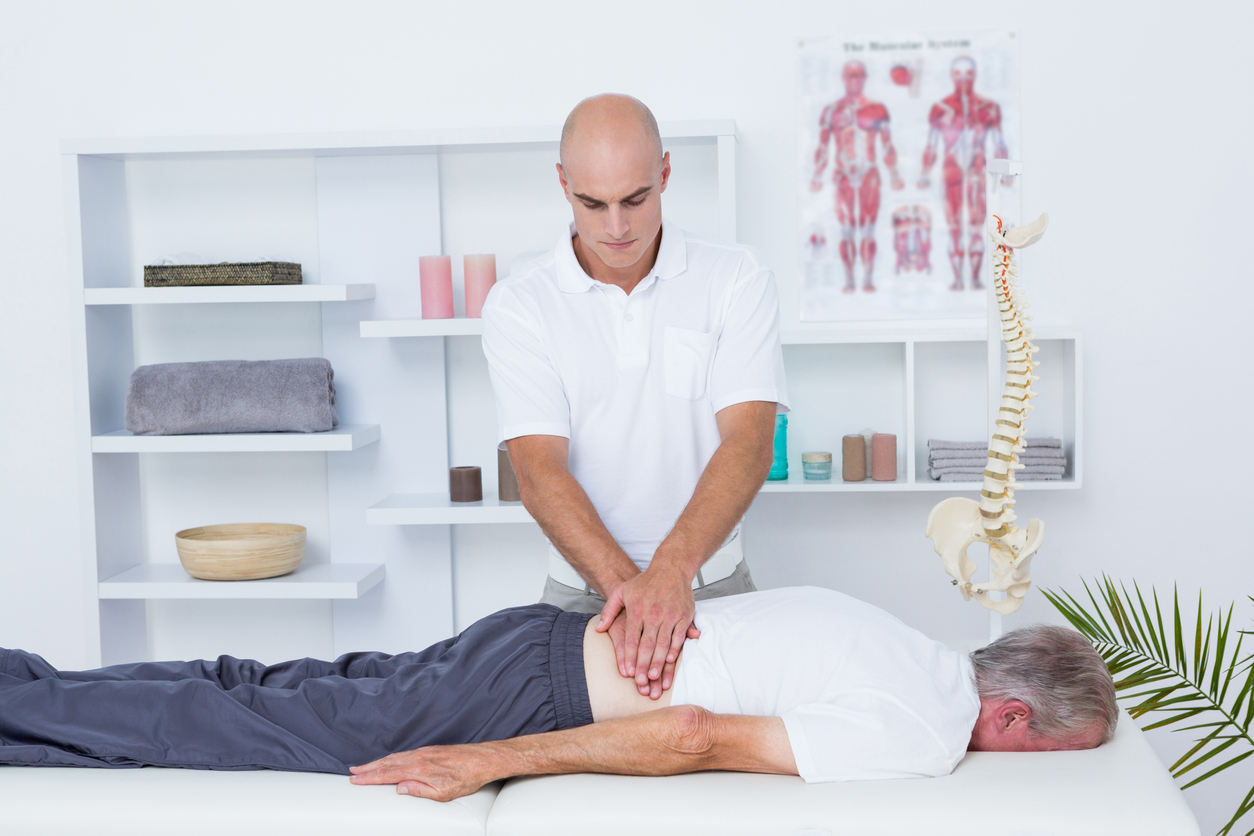Are you living with chronic back pain and limited mobility? If so, you may be one of the multitudes of people worldwide suffering from degenerative disc disease (DDD). DDD is a common condition in which the discs between the vertebrae gradually break down over time, causing pain, stiffness, and limited mobility.
When it comes to managing DDD, chiropractic care plays a crucial role. Chiropractors use various techniques, including spinal adjustments, mobilization, and rehabilitative exercises, to alleviate pain and improve spinal function. In this post, we will delve into the different chiropractic techniques used to treat DDD, their benefits, and how they can help you regain control of your life. But before we do that, let’s start with the basics.
What is DDD?
Degenerative Disc Disease (DDD) is where the discs between your vertebrae wear down over time. Typically, these discs act as shock absorbers for the spine, and their degradation can cause discomfort and pain.
Causes of DDD
The causes of DDD are primarily age-related. As we age, our spinal discs lose their flexibility, elasticity, and shock-absorbing characteristics. Other factors that can increase the likelihood of this disease include:
- Obesity
- Smoking,
- Heavy physical work
- And injury.
Symptoms of DDD
Symptoms of DDD vary from person to person. Some experience no symptoms at all, while others suffer severe pain. The most common symptoms include:
- Pain in the lower back or neck
- Numbness or tingling in your legs or arms
- Reduced ability to bend or twist the back
Understanding these symptoms is crucial for effective management, and individuals with DDD should also be aware of things to avoid with degenerative disc disease – activities or habits that may exacerbate their condition.
Chiropractic Treatment Techniques for DDD
Chiropractic treatment for Degenerative Disc Disease (DDD) employs techniques tailored to the individual’s unique symptoms and comfort levels. The central goal is to restore mobility, alleviate pain, and prevent further disc degeneration. Most of these techniques do this by restoring the spine’s alignment and improving its overall function.
1. Spinal Manipulation and Adjustments
One of the primary chiropractic techniques used in treating DDD is spinal manipulation. This technique involves the chiropractor applying controlled force to specific joints of the spine that exhibit unusual or aberrant movement patterns or fail to function normally. The process can help reduce pain, improve flexibility, and enhance overall spinal health.
2. Flexion-Distraction Technique
Another common technique is the flexion-distraction technique. This technique uses a table in conjunction with gentle hands-on manipulation by a chiropractor. The table slowly moves at the same time that the chiropractor gently manipulates your spine. The combined effects serve to improve the overall health of the spine and discs by:
- Increasing the gap between vertebrae (thereby releasing pressure)
- Improving blood flow
- Improving oxygen and nutrient intake in affected regions.
3. Instrument-Assisted Manipulation
Instrument-assisted manipulation is another frequently used method. This technique involves using a hand-held instrument that allows chiropractors to apply force without thrusting into the spine. It’s often utilized for older patients who have degenerative joint syndrome.
4. Therapeutic Exercises and Stretching
Therapeutic exercises and stretching are integral parts of chiropractic care for DDD. These exercises can help relieve pressure on the spinal nerves, enhance flexibility, strengthen the muscles supporting the spine, and promote healthy disc alignment. They also play a crucial role in patient recovery and can prevent further disc degeneration.
5. The Alaska Back Pain Protocol (ABPP)
The Alaska Back Pain Protocol (ABPP) developed by Dr. Brent Wells of Better Health Alaska is a comprehensive approach that blends chiropractic care, physical therapy modalities, massage therapy, and home-based exercises to treat back pain effectively. The vital thing to note is that it is a protocol developed from the combination of other therapy modalities that, when combined, enhance each other’s effects.
It’s designed to provide long-lasting relief from DDD symptoms and augment the patient’s quality of life by enhancing flexibility, strength, and overall spinal health. By integrating multiple treatment methods, the ABPP provides a holistic approach to managing DDD, addressing the patient’s symptoms and the underlying causes of the condition.

Comparing Chiropractic Care with Other Treatment Modalities
As noted above, chiropractic care emphasizes a holistic, natural approach to managing DDD that relies on conservative methods instead of invasive techniques like surgery or potentially addictive drugs like prescription painkillers.
Comparison with Medication and Surgery
Medications, while effective in providing temporary relief, do not treat the ultimate cause of the pain and can often come with side effects. This is particularly true of the high-powered painkillers most often used in cases of severe pain.
And, of course, surgery is generally considered only as a last resort due to its invasive nature and the potential for complications. No one wants to “go under the knife” unless they have to.
For such people, chiropractic care may be the route of choice as it seeks to correct the underlying issues causing the pain, such as spinal misalignment. It’s non-invasive, has fewer side effects, and focuses on promoting the body’s natural healing abilities.
Complemented by Physical Therapy and Massage Therapy
When comparing chiropractic care with other treatment options, one should also consider the benefits of combining modalities. Physical therapy complements chiropractic care well, focusing on building up the muscles around the spine, improving flexibility, and promoting better posture. This combination provides a more holistic approach to treating DDD, which, again, addresses not only the symptoms but also the underlying causes.
Similarly, massage therapy can be a beneficial adjunct to chiropractic care in managing DDD. While chiropractic adjustments focus on spinal alignment, massage therapy targets muscle tension and stiffness that often accompany DDD. Adequately done, massage therapy can:
- Improve blood circulation
- Reduce muscle tension
- Enhance the effectiveness of chiropractic adjustments
- Provide improved pain management
- Improve the quality of life
The astute reader will note that physical therapy and massage therapy are two of the four therapies combined with chiropractic care in Dr. Brent Well’s Alaska Back Pain Protocol mentioned above. Roughly two decades ago, Dr. Wells discovered that complementary modalities amplify each other’s effects. That led him to develop the ABPP based on that principle.
Of course, regardless of the protocol, therapy, or technique, we recommend that you seek out a healthcare professional before you change your health routine – adding exercise, taking medication, or just beginning a new type of therapy. A qualified healthcare provider can help determine the optimum treatment plan for your needs and guide you toward recovery.
The Science of DDD and Chiropractic Care
Over the years, various scientific studies have shed light on the effectiveness of Chiropractic care on DDD and other related musculoskeletal issues involving the discs.
a. Spinal Manipulation’s Implicates Benefits for DDD
Another study in the Journal of Manipulative Physiological Therapeutics, investigating the long-term effects of treatments like spinal manipulation for acute back pain and sciatica, also shines a light on the potential benefits of chiropractic care for Degenerative Disc Disease (DDD). Although the study didn’t focus on DDD specifically, its evidence supports the efficacy of spinal manipulation, a common chiropractic technique, in managing chronic spinal pain – one of several symptoms often associated with DDD.
b. Chiropractic Success Story: Activator Method and DDD Relief
Finally, a study published in the Journal of Chiropractic Medicine explored the chiropractic management of a 74-year-old male veteran with lower back pain associated with diffuse idiopathic skeletal hypertrophy and DDD. The case study demonstrated how chiropractic care, specifically the Activator Method Protocol, substantially reduced pain and improved the man’s functional ability. Again, this provides further evidence supporting the role of chiropractic care as a viable and effective treatment option for individuals with DDD.
c. Relief for Neck Pain Caused by DDD
A case study published in the Journal of Chiropractic Medicine details the experience of a 66-year-old woman suffering from neck pain due to DDD. After undergoing a six-week regimen of therapeutic massage, a common adjunct to chiropractic care, the patient reported significant improvements in her pain and disability scores. This report underscores the potential effectiveness of chiropractic care and related therapies in managing the symptoms of DDD.
d. Chiropractic Care Provides Relief for Lumbar Disk Herniations (Commonly Associated with DDD)
One study published in the Journal of Manipulative and Physiological Therapeutics found that patients with lumbar disk herniations (a condition often associated with DDD) experienced improvement after receiving chiropractic adjustments. The study highlights the effectiveness of chiropractic care in reducing pain and enhancing functional outcomes for patients with LDH.
All these scientific studies highlight the potential benefits of chiropractic care in managing and treating degenerative disc disease. From reducing pain and enhancing physical function to improving overall quality of life, chiropractic interventions have shown positive outcomes for patients with DDD. These findings add to the ever-growing body of evidence supporting the use of chiropractic care as a complementary approach to conventional treatments for DDD.

The Philosophy of Chiropractic and Conservative Care
The philosophy of chiropractic care emphasizes natural and conservative methods of healthcare. Most chiropractors regard the human body as a person’s first physician. As a result, they take advantage of the human body’s ability to heal itself. They do this by maintaining optimal spinal health to promote overall well-being.
Conservative care maintains that non-invasive and holistic treatments should be exhausted first before one considers using heavy-hitting therapies like surgery or potent prescription painkillers.
When it comes to managing Degenerative Disc Disease (DDD) specifically, this philosophy translates into using chiropractic techniques designed to:
- Restore spinal alignment
- Improve flexibility
- And alleviate pain.
Benefits of Chiropractic Care for DDD
All told, chiropractic care can offer many benefits for patients grappling with DDD. One of the most important of these is pain relief. Chiropractic adjustments target the areas of the spine affected by disc degeneration. This helps reduce discomfort.
Other key benefits include:
- Improved flexibility and mobility
- Better sleep
- Increased energy
- And an overall sense of improved wellbeing
Safety and Risks of Chiropractic Treatments
Of course, like any treatment, chiropractic care also carries potential risks. Fortunately, adverse events associated with chiropractic care are usually mild and temporary. The most common side effects include short-term discomfort in the treatment area, fatigue, and headaches.
Serious complications are rare, mainly when a trained professional administers the treatment. Nevertheless, individuals with certain severe health conditions may find chiropractic care unsuitable. As a result, discussing your health history and any concerns with your chiropractor (or any other medical professional) before beginning treatment is necessary.
How Does DDD Impact Quality of Life?
DDD can significantly impact a person’s quality of life. Chronic pain can restrict physical activities, lead to sleep disturbances, and cause emotional distress. These, in turn, can affect work performance and personal relationships and lead to overall decreased life satisfaction.
Treatment for DDD often involves a combination of pain management, physical therapy, and lifestyle changes. In some cases, surgery may be recommended. Chiropractic care, including spinal manipulation and therapeutic exercises, has also successfully led to a reduction in pain and an improvement in mobility for many DDD patients in various stages of the condition.
Conclusion
Ultimately, chiropractic care can be crucial in managing Degenerative Disc Disease. Through various techniques like spinal manipulation, flexion-distraction technique, and the others discussed above, chiropractic care can address the root cause of your problem. In so doing, it offers a non-invasive alternative to medication and surgery – with fewer side effects.
So, if you’re suffering from DDD and you’re in the Anchorage, Alaska, area, you might consider paying a visit to Better Health Alaska. Dr. Brent Wells and his team of physical therapists, chiropractors, and nurse practitioners are ready to help you.









